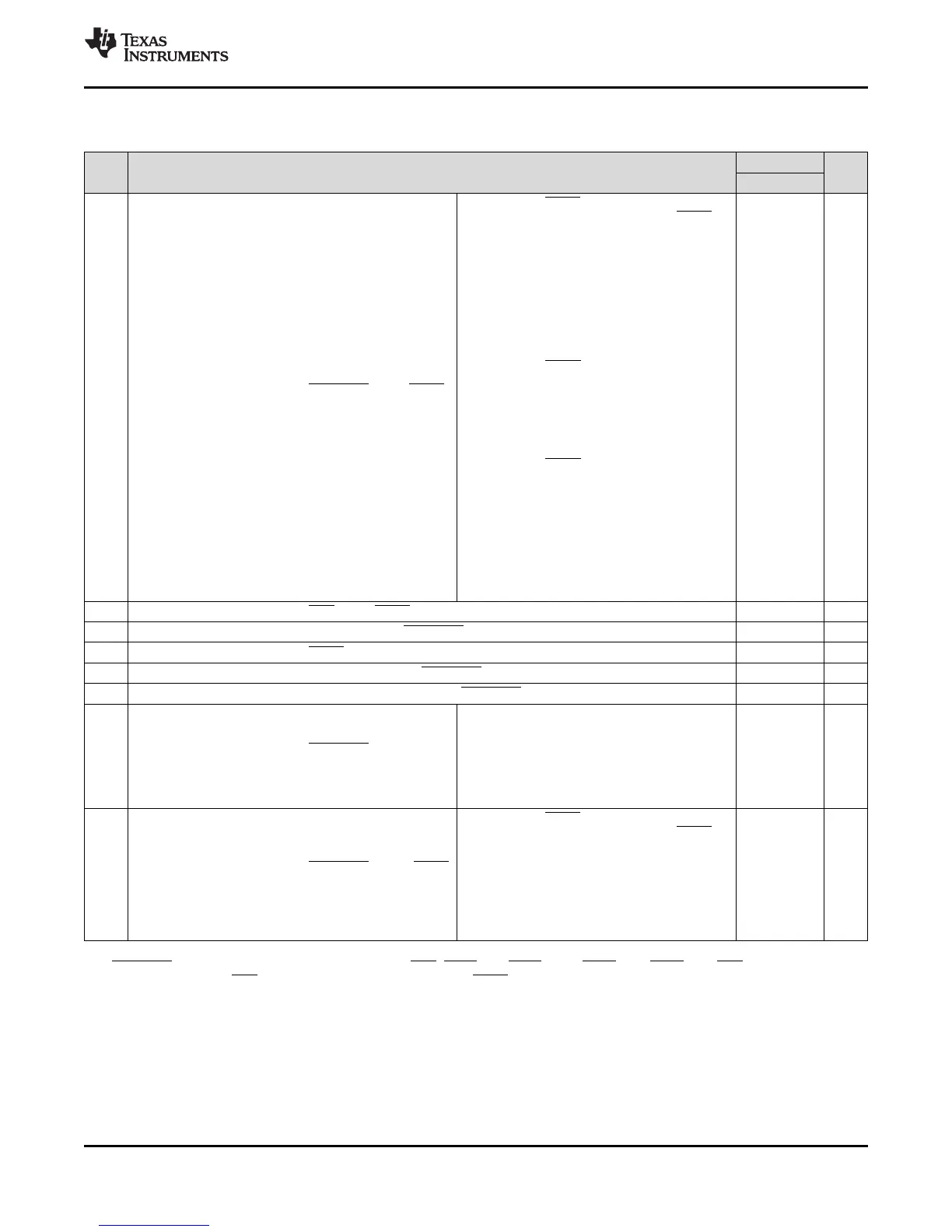223
TMS320C6748
www.ti.com
SPRS590G –JUNE 2009–REVISED JANUARY 2017
Submit Documentation Feedback
Product Folder Links: TMS320C6748
Peripheral Information and Electrical SpecificationsCopyright © 2009–2017, Texas Instruments Incorporated
(1) M=SYSCLK2 period in ns.
(2) HSTROBE refers to the following logical operation on HCS, HDS1, and HDS2: [NOT(HDS1 XOR HDS2)] OR HCS.
(3) By design, whenever HCS is driven inactive (high), HPI will drive HRDY active (low).
Table 6-114. Switching Characteristics Over Recommended Operating Conditions for Host-Port Interface
[1.0V]
(1) (2) (3)
NO. PARAMETER
1.0V
UNIT
MIN MAX
5 t
d(HSTBL-HRDYV)
Delay time, HSTROBE low to HRDY
valid
For HPI Write, HRDY can go high (not ready) for
these HPI Write conditions; otherwise, HRDY
stays low (ready):
Case 1: Back-to-back HPIA writes (can be either
first or second half-word)
Case 2: HPIA write following a PREFETCH
command (can be either first or second half-
word)
Case 3: HPID write when FIFO is full or flushing
(can be either first or second half-word)
Case 4: HPIA write and Write FIFO not empty
For HPI Read, HRDY can go high (not ready)
for these HPI Read conditions:
Case 1: HPID read (with auto-increment) and
data not in Read FIFO (can only happen to first
half-word of HPID access)
Case 2: First half-word access of HPID Read
without auto-increment
For HPI Read, HRDY stays low (ready) for
these HPI Read conditions:
Case 1: HPID read with auto-increment and
data is already in Read FIFO (applies to either
half-word of HPID access)
Case 2: HPID read without auto-increment and
data is already in Read FIFO (always applies to
second half-word of HPID access)
Case 3: HPIC or HPIA read (applies to either
half-word access)
22 ns
5a t
d(HASL-HRDYV)
Delay time, HAS low to HRDY valid 22 ns
6 t
en(HSTBL-HDLZ)
Enable time, HD driven from HSTROBE low 1.5 ns
7 t
d(HRDYL-HDV)
Delay time, HRDY low to HD valid 0 ns
8 t
oh(HSTBH-HDV)
Output hold time, HD valid after HSTROBE high 1.5 ns
14 t
dis(HSTBH-HDHZ)
Disable time, HD high-impedance from HSTROBE high 22 ns
15 t
d(HSTBL-HDV)
Delay time, HSTROBE low to HD
valid
For HPI Read. Applies to conditions where data
is already residing in HPID/FIFO:
Case 1: HPIC or HPIA read
Case 2: First half-word of HPID read with auto-
increment and data is already in Read FIFO
Case 3: Second half-word of HPID read with or
without auto-increment
22 ns
18 t
d(HSTBH-HRDYV)
Delay time, HSTROBE high to HRDY
valid
For HPI Write, HRDY can go high (not ready) for
these HPI Write conditions; otherwise, HRDY
stays low (ready):
Case 1: HPID write when Write FIFO is full (can
happen to either half-word)
Case 2: HPIA write (can happen to either half-
word)
Case 3: HPID write without auto-increment (only
happens to second half-word)
22 ns
